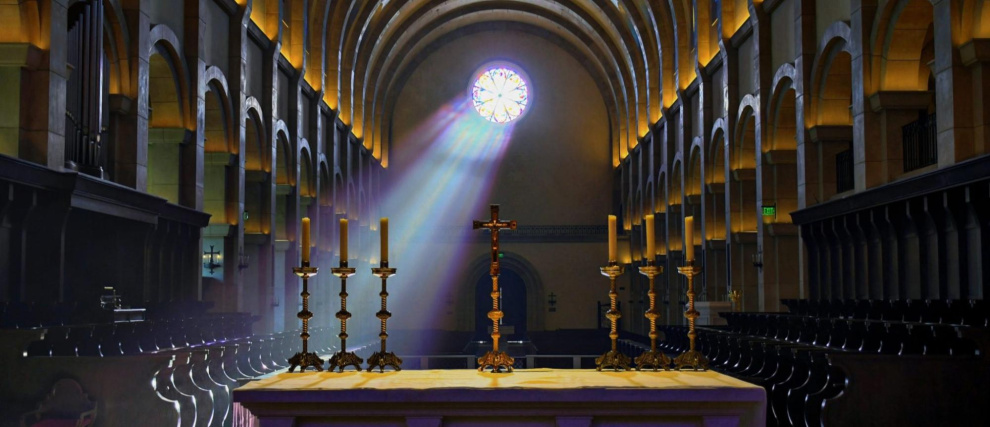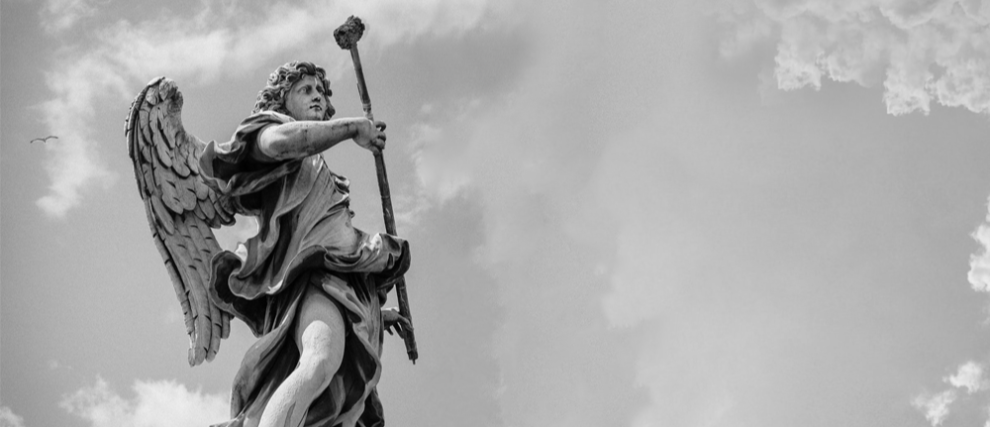Saint Joan of Arc
Biography of Joan of Arc
Joan of Arc was born on January 6, 1412 in Domrémy in Lorraine. She was the daughter of wealthy peasants, known to be excellent Christians. Joan grew up during the Hundred Years War. At the age of thirteen, she heard mysterious voices and developed her mystical life. For three years the archangel Saint Michael, Saint Catherine of Alexandria, and Saint Margaret of Antioch asked her to liberate France and to crown the king in Reims. For four years, Joan resisted this call.
At the age of sixteen, unaware of the laws of war, she presented herself to the Prince, the future Charles VII, in Chinon, and told him of the voices she had heard. Doubtful, he had her questioned by several theologians of the university. Their opinion was positive; in her, they saw nothing wrong, only a good Christian. Joan made four prophecies to the Dauphin: the English would lift the siege of Orleans, the king would be crowned at Reims, Paris would return to Charles' royal domain and the Duke of Orleans would return from his captivity in England. Charles gave her an army to rescue Orléans from the hands of the English. In May 1429, she left in armor and a sword and in eight days, freed Orléans, which had been besieged for seven months. Joan, nicknamed the maiden of Orleans, made her way to Reims, freeing each of the cities in her path. In 1429 Charles was crowned King of France in Reims. Joan then tried to liberate Paris, but failed. In 1430 Joan, abandoned by the king, was taken prisoner at Compiègne by the Burgundians and then sold to the English. For a year, she was held in prison by the English. The girl was brave and heroic to keep her purity despite the attempts of the soldiers.
In 1931, Joan d 'Arc was tried in Rouen by a religious court. It was a large and solemn trial, presided over by two ecclesiastical judges, Bishop Pierre Cauchon and Inquisitor Jean le Maistre. In fact, he was guided by a group of many theologians from the famous University of Paris. Joan was accused of being a witch and condemned as heretical. Until the end, King Charles VII would never intervene, though he had ascended the throne thanks to her help. Joan was burned at the stake in the Old Market Square in Rouen on May 30, 1431. At the request of Joan's mother and Pope Calixtus III, a process of rehabilitation took place twenty-five years later. Joan of Arc was canonized in 1920 by Benedict XV.
(Discover the life and work of many other saints on Hozana.)
Why is Joan of Arc a Saint?
Joan of Arc was illiterate and therefore left no writings. Yet, we have two sources of exceptional historical value to know Joan of Arc in depth and discover the greatness of her soul. These are the two trials that concern her. The first is that of her judgment at Rouen in 1431, which contains the transcript of Joan’s long and numerous interrogations during the last months of her life, and recounts the very words of the saint. The second is the rehabilitation trial, also known as the nullity of conviction trial. It contains the testimony of approximately 120 eyewitnesses from all periods of her life. These testimonies make it possible to highlight the holiness of Joan at different moments of her life and according to the circumstances, which are more and more trying.
- Childhood
Joan's spirituality, received from her parents and the environment in which she grew up, is deeply centered on the Holy Names of Jesus and Mary. In the context of the 100-year war, Joan was particularly charitable and compassionate towards the poorest, the sick and all the suffering.
- The call of Heaven through the voices of the saints
At the age of 13, when she began to receive messages from Heaven, young Joan intensified her spiritual life. She participated daily in the Mass, confessing and communing frequently. She prayed at length before the Crucifix and the image of the Virgin. During these years, which Benedict XVI describes as a "hidden life," Joan continued her inner maturation and made the vow of perpetual virginity for the Lord. This resulted in two years, one of "public life" and the other of "passion".
- The political mission: "public life"
When she undertook her mission, Joan, who was only 17 years old, proved to be a very strong and determined girl, able to convince uncertain and discouraged men. Joan based her political mission on Christ, in 1429, she dictates a letter to ask the English to leave Orleans, her proposal is a true peace in justice between the two Christian peoples, in the light of the names of Jesus and Mary. Finally, for a year, Joan lived among the soldiers, and she took the opportunity to accomplish a true mission of evangelization. The testimonies relate her goodness, courage and extraordinary purity. She was called by all, including herself, pucelle, meaning virgin.
- The "passion" and death of Joan of Arc
It was during the last year of her life that Joan would reveal the beauty of her soul and her love for Christ. In the year 1430, the long and dramatic process of condemnation began, ending with the pyre. The judges were theologians who lacked the charity and humility to see in this young person the action of God and his holiness. Before her death, Joan received communion for the last time, and asked one of her priests to hold a processional cross in front of the stake. She died watching Jesus crucified and uttering the name of Jesus several times and out loud.
Canonization of Joan of Arc
Between 1841 and 1849, the reports of the trials of Joan of Arc were published. These absolutely reliable documents reveal the virtues of Joan and her strength of character. They are provoking renewed interest in the Pucelle. The bishop of Orléans was shocked by these archival documents, and declared in 1855 that Joan of Arc was really an envoy of God. He would work for canonization.
Joan of Arc was beatified in 1909 and then canonized in 1920, nearly 500 years after her death. The stakes of this canonization are important. For the sake of reconciliation, the Holy See and French government accepted the beatification of Joan. The figure of Joan of Arc gathers people by the universality of the values that she represents: her strength of conviction and her determination can speak to all, and she was taken as a model and heroine by various circles.
In 1922, Joan of Arc was proclaimed secondary patroness of France, with Saint Therese of Lisieux (the main patroness being the Virgin Mary, since the vow of Louis XIII). The feast of Saint Joan of Arc is set for May 30, the day of her entry into Heaven.
Prayers to Saint Joan of Arc
There are many prayers to Saint Joan of Arc: litanies, novenas, etc. She intercedes especially for the young, for whom she is a luminous example, as well as for France, of which she is one of the patronesses. Many prayer initiatives are developing in France and all over the world to appeal to this exemplary and extraordinary figure.

